Closed reduction; long arm cast
1. Introduction
This is a rare injury. In younger children bear in mind the possibility of nonaccidental injury.
If there is diagnostic doubt, screening by image intensification can be useful.
Significant displacement is rare.
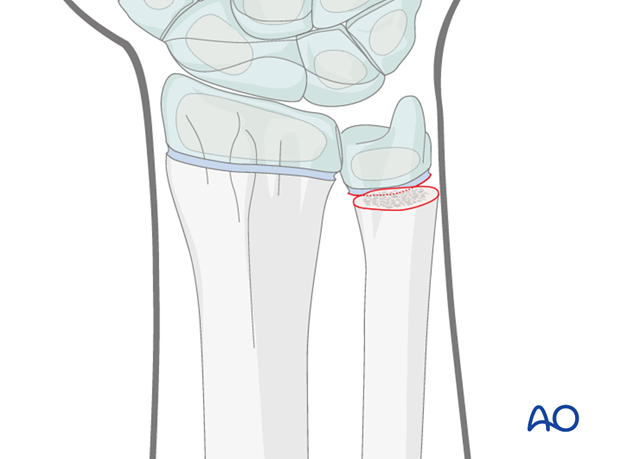
2. Patient preparation
This procedure is normally performed with the patient in a supine position.
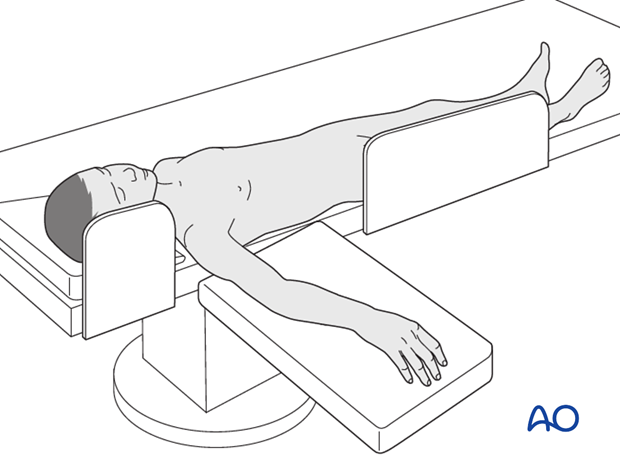
3. Anatomy of the distal forearm
A thorough knowledge of the anatomy of the wrist is essential.
The additional material gives a short introduction.

4. Reduction
Indirect reduction by forearm rotation
Reduction maneuver is by forearm rotation and direct pressure over the distal ulna.
Anteriorly displaced fractures are reduced by forearm pronation.
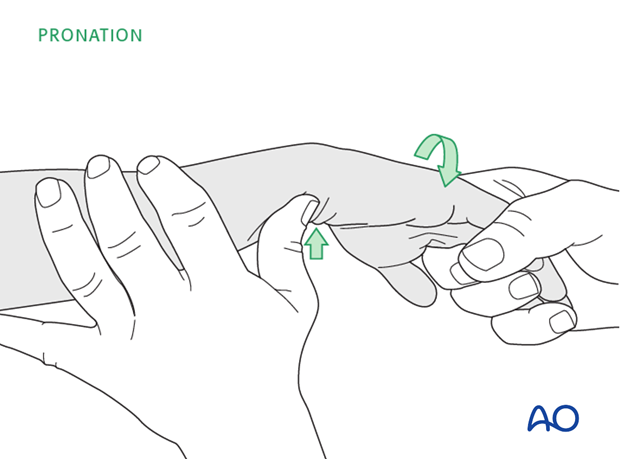
Posteriorly displaced fractures are reduced by forearm supination.
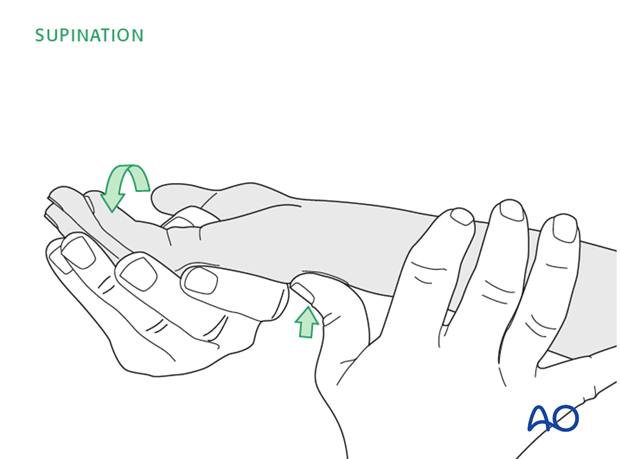
In the unlikely event of failure of reduction, K-wire stabilization may be required.

Direct reduction using K-wire
For irreducible fractures, a K-wire can be inserted into the fracture site and used as a lever to facilitate reduction of the ulna.
Note: This technique applies pressure to the already compromised growth plate and should be used only exceptionally and with great care.
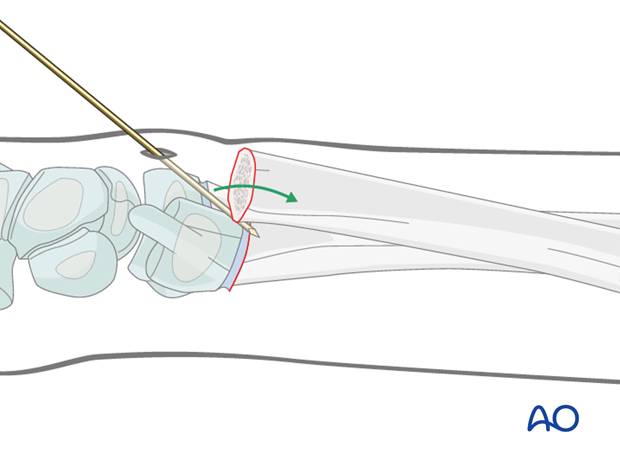
5. Long arm cast
General conciderations
Once the fracture displacement has been reduced, the arm is splinted in a long arm cast.
The purpose of the cast is to maintain the reduction by preventing forearm rotation.
The position of the forearm depends on the direction of the original displacement, with the forearm pronated for a anteriorly displaced fracture, and supinated for a posteriorly displaced fracture.
The long arm cast is applied according to standard procedure:
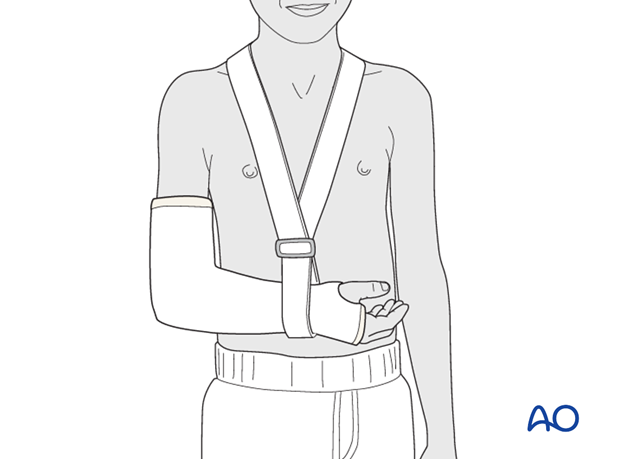
Splitting of the cast
If a complete cast is applied in the acute phase after injury, it is safer to split the cast down to skin over its full length.
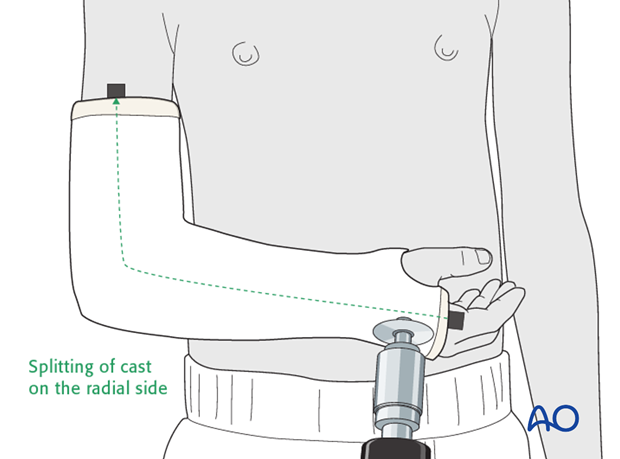
6. Aftercare
Tight cast
Further swelling in a restricting cast can cause pain, venous congestion in the fingers and occasionally a compartment syndrome.
For this reason any complete cast applied in acute phase should be split down to skin.
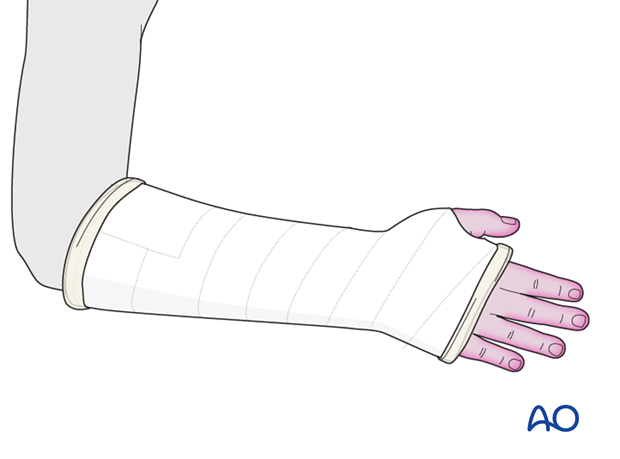
Parents/carers should be instructed how to detect circulatory problems by pressing and releasing the fingertips and watching if the blood flow/color returns to normal (capillary refill), compared to the opposite hand.
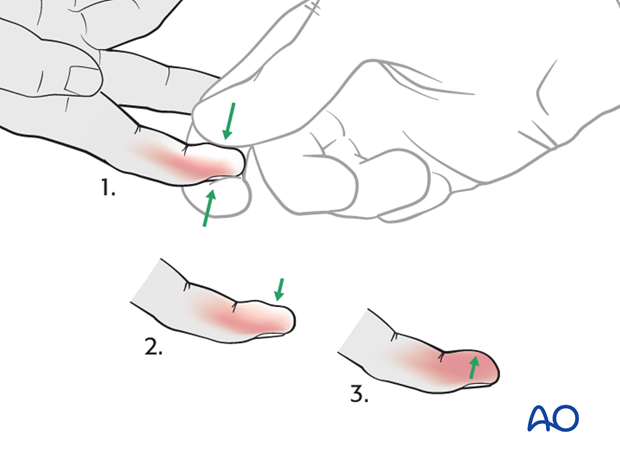
Compartment syndrome
Compartment syndrome is an unusual but serious complication after the application of a complete cast and can be difficult to diagnose, especially in younger children. Neurological signs appear late and the main sign is excessive pain on passive extension of the fingers.
It is important to make sure that the parents/carers are aware of the risk of compartment syndrome.
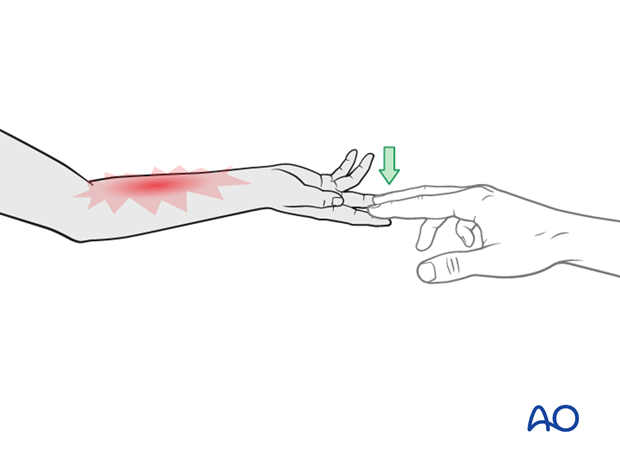
The parents/carers and patient should be informed to take note of increased pain and/or unresponsiveness to normal painkillers.
They should know that this may indicate serious complications. It is important for them to detect these signs as early as possible and report them urgently to the surgeon/nurse by telephone, or to attend the Emergency Room (ER) without delay.
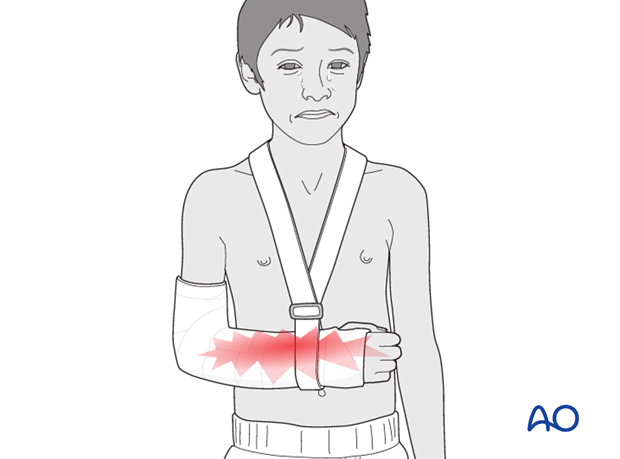
Nerve compression is an occasional complication and the signs include:
- Sensory deficits (numbness)
- Weakness of active finger movement
- Paresthesia (tingling)
Infections
See also the additional material on postoperative infections.
Cast care
If a normal plaster of Paris cast is used, it is important to keep the cast clean and dry in order to maintain the reduction.
When the swelling has reduced, the cast can become loose. The loss of support can result in loss of reduction.
In this circumstance, the parents/carers are advised to return to the healthcare provider.
Follow-up x-rays
Depending on the fracture pattern, the age of the child and the method of treatment, the patient has to return for follow-up x-rays to monitor the fracture position.
X-rays taken for fracture position can be taken with cast in place. Any x-rays to assess the state of bone healing must be taken without the cast and correlated with clinical examination.
In most cases, it is conventional to obtain follow-up x-rays after reduction to ensure that the position is maintained.
In general, in the child below 5 years of age, the follow-up is usually about 4-5 days after reduction. In the older child with a potentially unstable fracture, an x-ray would normally be taken at 7-10 days.
Further follow-up x-ray is a matter of clinical judgement, the responsibility of the treating surgeon, and tends to be longer in older children (see also Healing times).
For complete fractures of the metaphysis, redisplacement after reduction is not uncommon. It is therefore, important to take early follow-up x-rays in order to detect a possible redisplacement.
See also the additional material on posttraumatic growth disturbances.













